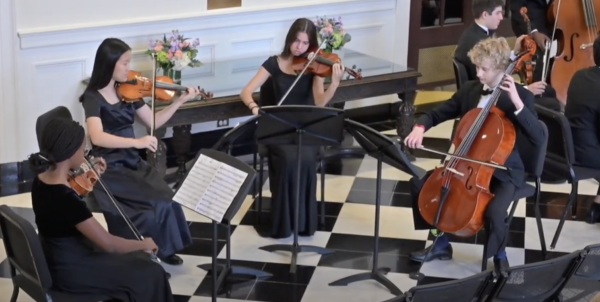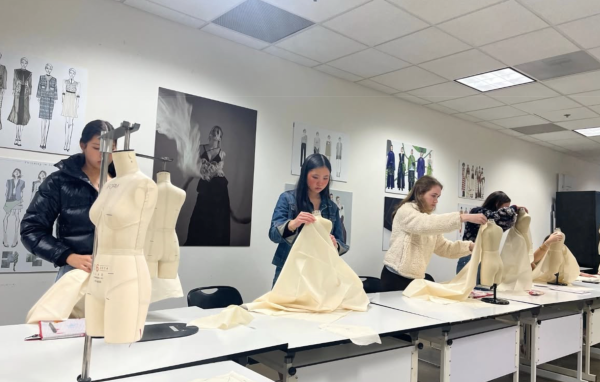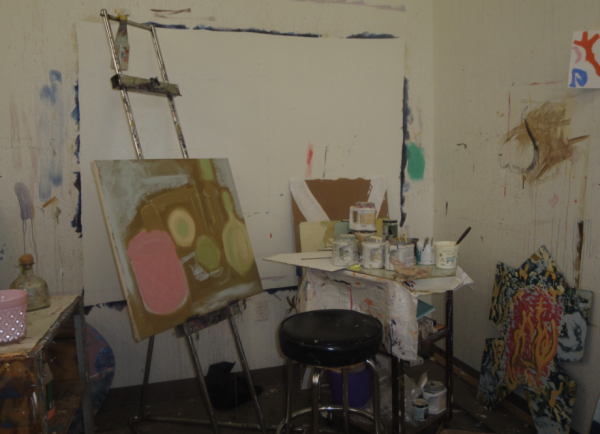AP Art students use summer to build up portfolios
At Westminster, students have the option to sign up for any of three different art tracks: Drawing and Painting, Digital Imaging, and 3D Design. Students who choose any of these three tracks have the option of submitting a portfolio of an accumulation of pieces for college credit. As the school year starts back up again, AP art students continue to labor over the portfolios that they worked on over the summer. Students had to brainstorm ideas for the pieces they were going to work on so that they can present their portfolio of their best pieces to the CollegeBoard. Their dedication and effort become evident in these submissions.
AP Portfolio is not only an experimental course, but a technical course. It is a class where students must be prepared to be challenged with different materials and techniques. The class is also for students who wish to push themselves outside of their comfort zone. In AP Portfolio, teachers teach their students how to incorporate newly learned techniques when using more complex materials.
“It’s for the students that are interested in really pursuing drawing and painting and they’ve decided that Drawing and Painting 1 and 2 are fun and they want to get [more] serious,” said Pamela Martinez, upper school Drawing and Painting teacher. “We do things like working with difficult materials like oil paint and I teach them techniques that are more classical, like rendering with oil paint.” A portfolio consists of two main sections: Breadth and Concentration. Breadth is where students show the CollegeBoard that they can utilize a wide range of materials and delve in a wide range of subject matter. A concentration is a series of 12 pieces surrounding a central theme.
AP Digital Imaging teacher Benjamin Steele describes the concentration as a section “where students express their own idea, their own theme, and their own choice of medium over a period of time that shows evolution and growth.” Another section of portfolio is Quality. Students may submit five Quality pieces that are pulled from the Breadth or Concentration sections.
“These pieces have to show off our quality of work, meaning our craftsmanship has to be precise and detailed,” said AP Drawing and Painting student senior Sasha Fuson. In AP Portfolio, students must pay attention to several details mandated by the CollegeBoard that will affect their scores, which are graded on a scale of one to six; they also must consider which pieces will fit into which section of the portfolio.
“In AP, everything is centered around the AP rubric and seeing our paintings based on how the CollegeBoard will see them,” said Fuson. “Our critiques are a lot more thoughtful and specific and we focus on what differentiates our work from a six and a five or a four and a three. Everything we make is with the intention of going into our breadth portfolio or to build towards our concentrations.” Martinez expects her AP students to think in a non-traditional way where they will have the confidence to create a piece with any given material. Creativity is an important aspect when taking AP Portfolio or any art class and affects how pieces are graded on the exam.
“By the time you get to Portfolio you really have to know how to use creative thought to bring it together to create your piece,” said Martinez. “My goal is to be able to put any medium in front of them and they won’t be intimidated by it — that they will have a structure for looking at materials that may seem really foreign, like plaster and watercolor, that they [can] sit in front of any material and do [something] with it.” Many students endure many challenges before they can come up with a good idea for their next piece. Additionally, students also have a tight schedule where they have to complete 12 pieces a semester, meaning they must complete about two pieces every two weeks.
“Some students have a really difficult time coming up with what that thing is that they want to spend that much time on, and they will have a few false starts,” said Steele. However, Fuson doesn’t find the workload to be a burden because of her strong passion for art.
“Whenever I come to class or open studio, I can zone out on whatever else is stressing me out, [like] deadlines, and just focus on what I need to do to complete the piece I’m working on at that moment.” said Fuson.



